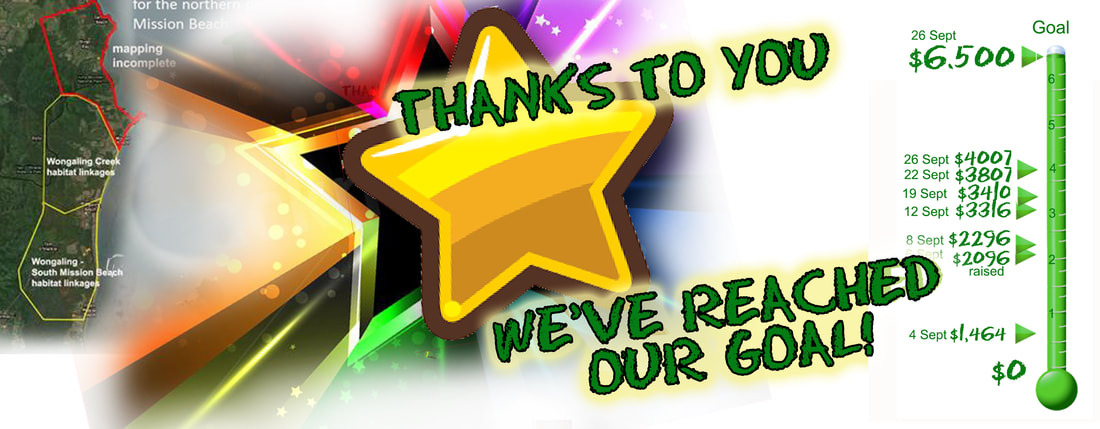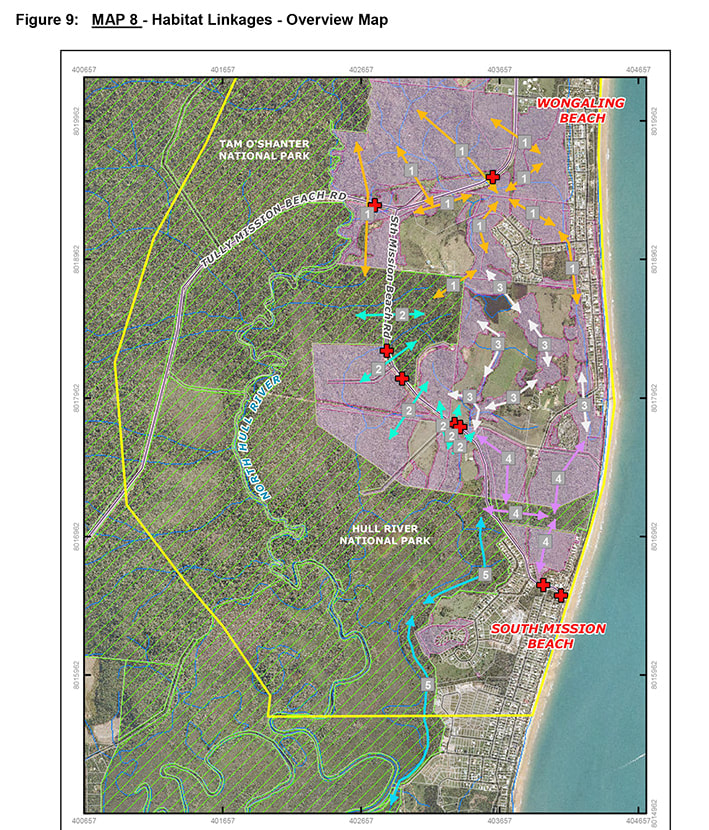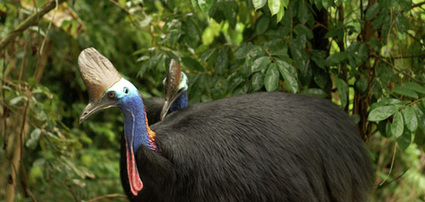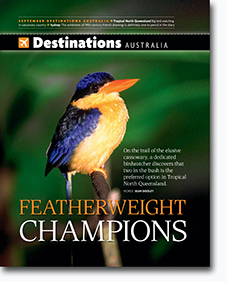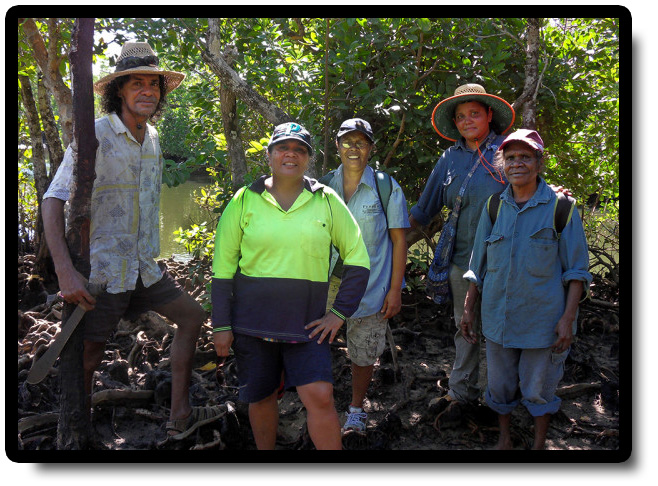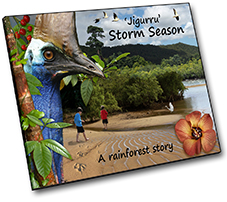$4007 was raised leading up to, and at the 2019 Community Cassowary Festival. A huge thanks to C4 for their generous offer to make up the shortfall to reach our goal of $6,500Helping to secure a safe future
|
Cassowaries at Mission Beach
Mission Beach - The Cassowary Capital
THE SLOW DOWN TOWN!
Please remember
Take extra care on roads through cassowary habitat
Drive expecting to see a cassowary over the next crest or round the next corner
Flash a warning to oncoming drivers if you see a cassowary near or on the road
Pull over and flash hazard lights to let a cassowary cross the road
Please be patient and don't overtake vehicles stopped to allow cassowaries to cross the road
THANK YOU AND WELCOME
TO OUR SLOW DOWN TOWN
THE SLOW DOWN TOWN!
Please remember
Take extra care on roads through cassowary habitat
Drive expecting to see a cassowary over the next crest or round the next corner
Flash a warning to oncoming drivers if you see a cassowary near or on the road
Pull over and flash hazard lights to let a cassowary cross the road
Please be patient and don't overtake vehicles stopped to allow cassowaries to cross the road
THANK YOU AND WELCOME
TO OUR SLOW DOWN TOWN
|
Mission Beach supports the highest density of the endangered Cassowary in Australia.
The Cassowary is important to the Djiru Traditional Owner culture and community identity. 40% of cassowary habitat at Mission Beach is not protected, much of it occurring on private land. An article in Wingspan Vol.20 No.3 2010 (the Birds Australia magazine) estimated each Cassowary at Mission Beach to be worth $1 million to the tourism industry. |
|
Cassowaries have died on the roads at an average rate of four a year at Mission Beach alone. It is not known how many die because of dog attack or from being caught in pig traps.
Development is still being approved that further destroys and fragments (including fencing), essential habitat, increasing the threats to the cassowary. |
For official reporting of cassowary incidences including the request for temporary recent crossing signs please ring 1300 130 372 and follow the prompt for injured cassowaries.
|
The Southern Cassowary (Casuarius casuarius johnsonni)
|
In evolutionary terms, the flightless birds, or ratites, were some of the earliest types of birds to develop. Some still exist today including the emu, rheas, kiwis and the ostrich. But several have become extinct in recent times including the Moas of New Zealand and the Elephant Bird of Madagascar. Some of these primitive birds are recognised as such because they have feathers which are not structured for aerodynamic flight. One of the most striking features about the cassowary is its long and unusual black feathers. Cassowary feathers differ from other birds in that they have a quill that splits in two. Cassowaries are Gondwanan in origin and were concentrated in the small part of the supercontinent that later broke apart and became the present areas of Northern Australia, Papua New Guinea and some of the eastern island groups of Indonesia. |
Two separate populations of Australian cassowary exist - one in the Wet Tropics area from Mt Halifax/Paluma through to Cooktown and the other on Cape York Peninsula in the McIlwraith and Iron Ranges, Jardine River area and the Eastern Dunes. The Australian cassowary is called the Southern Cassowary or sometimes the Double-wattled Cassowary. Once you realise that this species is also found in Papua New Guinea along with two more species and several subspecies, then it becomes clear why ours is called the Southern Cassowary.
|
A Cassowary is a solitary animal and when it is a sub-adult, it is banished from the home range of its father. The young animal wanders off to find its own future patch of habitat. It finds a part of the forest where it can coexist with the resident adult cassowaries and starts learning its way around. This is a vulnerable time for the maturing Cassowary. |
Dogs can easily chase it down and kill it; an adult Cassowary already resident in that forest can attack it and perhaps the young Cassowary may not be able to find sufficient food in a foreign area where it is disoriented.
Once the Cassowary has established its home range, it moves regularly through that range which can be quite large. Some of the Daintree animals have a home range of roughly 7 square km. The shape and area of the range changes depending on food and the annual breeding season (courting starts in May/June). Home ranges are not necessarily clearly defined and defended territories - they can overlap. Females tend to have overlapping ranges with several males.
On the Tablelands where the habitat is mainly rainforest, the ranges are larger. This increased range leads to fewer interactions between birds.
On the Tablelands where the habitat is mainly rainforest, the ranges are larger. This increased range leads to fewer interactions between birds.
|
The female Cassowary has turned the tables on what is mostly a maternal social structure in the animal world. The males incubate the eggs and raise the chicks. Once a clutch of eggs is laid, the female will seek out other males with which to mate. For each male that she finds, she will provide a clutch of eggs (usually 3 to 5) for him to nurture.
|
Why Cassowaries Are So Important
|
Rainforests would be a very different place with diminished diversity if there were no Cassowaries. These huge birds are the only animals capable of distributing the seeds of more than 70 species of trees whose fruit is too large for any other forest dwelling animal to eat and relocate. If these trees did not have an animal to disperse their seeds, they would only occur in concentrated pockets around the parent tree or in places where the seeds rolled such as gullies or the bottom of slopes. As a result over a long period of time the structure of large tracts of forest might change. In tropical rainforests in other parts of the world there are a wide range of animals which fulfill this role. In the Wet Tropics the cassowary plays the role which is accomplished by entire guilds of animals elsewhere.
Other animals such as White-tailed Rats may help distribute these smaller seeds but more often than not, they damage the seed rather than dispersing it intact. So the cassowary is vital for the widespread continuance of over 150 species of plants. That is why the Cassowary is referred to as a "keystone species".
|
As a result over a long period of time the structure of large tracts of forest might change. In tropical rainforests in other parts of the world there are a wide range of animals which fulfill this role. In the Wet Tropics the cassowary plays the role which is accomplished by entire guilds of animals elsewhere.There are at least another 80 species of plants which are also assisted by the cassowary's eating habits. These species have smaller seeds but many are toxic and only the Cassowary can safely consume them. Such dangerous eating habits are possible because the cassowary has a short/rapid digestive system which appears to be supported by an overactive liver and an unusual combination of stomach enzymes.
|
Threats to Cassowaries
The latest estimates suggest the total Australian population of the southern Cassowary numbers only between 1,200 and 1,500 adults. Some of the many problems facing cassowaries are:
|
|
One of the most ironic threats to cassowaries is the perceived kindness of people who enjoy hand feeding these impressive animals. Once a Cassowary is 'tamed' and approaches people rather than avoids them, its chances of being killed increase dramatically. This is because the cassowary frequently approaches cars or wanders regularly through residential suburbs where it can be attacked by dogs, especially those breeds kept for their hunting skills.
There are three specific areas in the Wet Tropics that are 'hot spots' for cassowaries:
- the Daintree area which has the problem of roads cutting through the bird's home ranges,
- the Kuranda and Atherton Tableland area which has the problems of habitat loss, fragmentation by roads and marauding dogs,
- and the Mission Beach area which has suffered extensive habitat loss to the degree that the birds have been squeezed into unnaturally small home ranges. They are forced to seek food from plantation sources and this closeness to human settlements brings them into more frequent contact with dogs. As they try to move around the remaining patches of habitat between the beach and the sloping hinterland behind it, they are commonly run over by cars.
As an endangered and nationally listed species, there is help being directed towards protection and hopefully recovery of Cassowary numbers but there is still much that needs to be done. The concern and action of everyone who resides in the Wet Tropics area is needed to save this bird but there are still too many people who aren't sufficiently interested. Simple steps can go a long way such as slowing down in Cassowary 'hot spot' areas and keeping dogs restricted to a fenced yard or on a leash.
If the whole community takes up the challenge, we could save the Cassowary.
Thanks to the Wet Tropics Management Authority for the above information.
For more information about cassowaries see the Australian Government page about the endangered Southern Cassowary.
There are three specific areas in the Wet Tropics that are 'hot spots' for cassowaries:
- the Daintree area which has the problem of roads cutting through the bird's home ranges,
- the Kuranda and Atherton Tableland area which has the problems of habitat loss, fragmentation by roads and marauding dogs,
- and the Mission Beach area which has suffered extensive habitat loss to the degree that the birds have been squeezed into unnaturally small home ranges. They are forced to seek food from plantation sources and this closeness to human settlements brings them into more frequent contact with dogs. As they try to move around the remaining patches of habitat between the beach and the sloping hinterland behind it, they are commonly run over by cars.
As an endangered and nationally listed species, there is help being directed towards protection and hopefully recovery of Cassowary numbers but there is still much that needs to be done. The concern and action of everyone who resides in the Wet Tropics area is needed to save this bird but there are still too many people who aren't sufficiently interested. Simple steps can go a long way such as slowing down in Cassowary 'hot spot' areas and keeping dogs restricted to a fenced yard or on a leash.
If the whole community takes up the challenge, we could save the Cassowary.
Thanks to the Wet Tropics Management Authority for the above information.
For more information about cassowaries see the Australian Government page about the endangered Southern Cassowary.
Cassowary Fruiting Trees
Your browser does not support viewing this document. Click here to download the document.
Check out how much fun it was at the Cassowary Festival www.cassowaryfestival.com
Cassowary SightingsCommunity has valuable knowledgeIncreasing conservation/development conflicts at Mission BeachTSC announcement Cassowary placed on 20 x 2020 list
Latest research on cassowary numbers
Gunduy - Indigenous cultural significance
Buy online
Some Random Stuff about Cassowaries
Monograph of Genus Casuarius
Cassowary Food Trees
|
